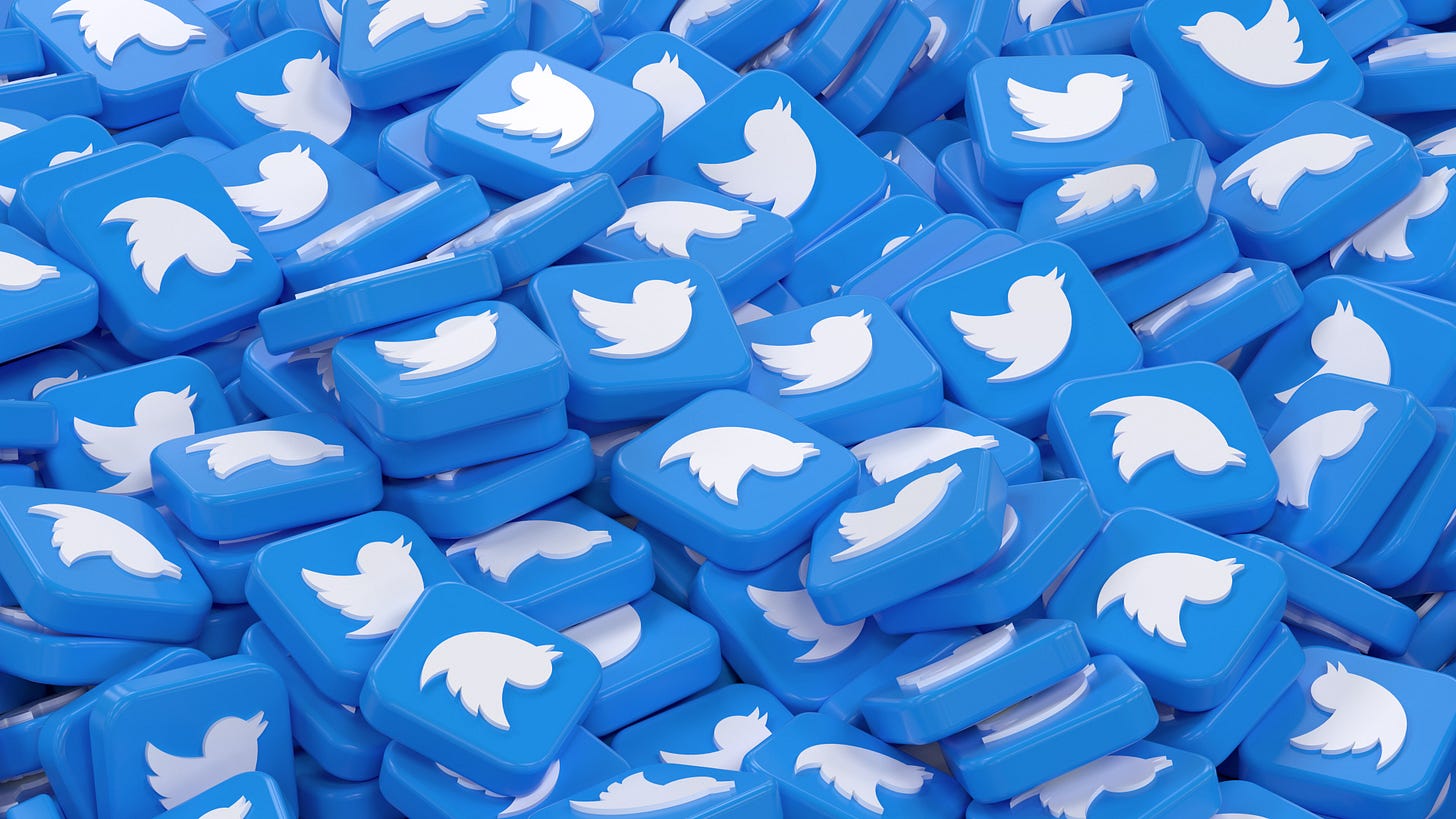The Market for Lemon Tweets
Twitter's verification process has sparked concerns about content quality and user trust. The same issues aren't all that different than Akerlof's famous market for "lemons."
You are reading Monday Morning Economist, a free weekly newsletter that explores the economics behind pop culture and current events. This newsletter lands in the inbox of over 2,500 subscribers every week! You can support this newsletter by sharing this free post or becoming a paid subscriber:
Twitter, the major platform where users share thoughts, engage in discussions, and follow their favorite influencers, has been an important component of the social media landscape. However, recent developments in Twitter's verification process have left many users seeking alternatives like Mastodon, Bluesky, and Threads. The evolving dynamics on Twitter have created an environment where low-quality information thrives, reminiscent of the principles laid out in Akerlof's groundbreaking paper on the "Market for 'Lemons'." Could solutions proposed in the 1970s hold the key to addressing Twitter's issues? Let's find out.
Let's start by understanding the origins of Twitter's verification process. Symbolized by the coveted blue checkmark, verification was initially designed to authenticate the identities of notable individuals and ensure credibility. However, since Elon Musk's acquisition of Twitter in October 2022, a series of questionable decisions have transformed the purpose and consequences of verification. Users can now pay a monthly subscription fee for a blue checkmark, unintentionally favoring financial status over content quality.
Now, let's journey back 50 years to the work of Nobel laureate, George Akerlof. In his seminal paper titled "The Market for Lemons: Quality Uncertainty and the Market Mechanism," Akerlof explored the concept of asymmetric information in markets, with a particular focus on the used car market. His research shed light on information asymmetry between buyers and sellers, in which one party possesses more information than the other. This situation can lead to market inefficiencies that result in low-quality products dominating the market.
In the market for lemons, Akerlof argued that when buyers cannot accurately assess the quality of a product, they become hesitant and are only willing to pay an average price that reflects the expected value of a low-quality product. As a result, sellers of high-quality products are discouraged from entering the market because people are only paying prices associated with low-quality cars. This behavior creates a cycle where the overall market quality deteriorates over time.
We can draw similar parallels to Twitter's verification process. The introduction of paid subscriptions for blue checkmarks has created a situation where financial status, rather than content quality, becomes the primary determinant of verification. The average quality of the content produced by a verified account is now much lower because anyone willing to spend $8 per month can be verified, regardless of the quality of their content. If you see a verified account on the platform, there’s now a level of uncertainty that mirrors the information asymmetry discussed by Akerlof.
In the context of Twitter, the market for lemons analogy is facilitated by the frequency of low-quality content that has increased because the verified accounts are prioritized in the algorithm, regardless of any natural popularity or content merit. Users who struggle to discern between genuinely high-quality accounts and those that simply purchased verification subscriptions become wary and potentially disengage from the platform altogether. This uncertainty erodes users’ trust, which results in low-quality content dominating the platform and creating a market for lemons system within the Twitter community. Instead of spending time creating connections and engaging in discussions, many people are just logging out.
So, how can Twitter address these challenges and create a more reliable experience? Akerlof's market for lemons paper offers valuable insights that can guide us toward potential solutions. Unfortunately for Musk, those solutions involve returning to the original version of the platform he purchased.
First, enhancing transparency is crucial. When the pay-to-verify system was first available, some users began purchasing verification to parody major brands which created havoc. That system didn’t last long and was quickly put on pause, but the damage was significant. Seemingly overnight, trust in the verification badge was gone. In order to reduce information asymmetry, Twitter must clearly communicate the criteria and process for verification, making it more transparent and understandable for users. Those updates have occurred more slowly, and it is now more difficult for users to create fake verified accounts that pose as legitimate brands. By providing greater visibility into how accounts were verified, users can make more informed decisions about who to follow and engage with.
Additionally, incorporating user-driven reviews and ratings can play a significant role in combatting the dominance of low-quality content. This is quite common in other markets where users are worried about low-quality outcomes, like renting from Airbnb or buying a product on eBay. A system where users could provide feedback and rate the quality and credibility of accounts empowers the Twitter community to collectively evaluate and filter content. This was previously done with engagement metrics like retweets and comments, but those items were deprioritized in the algorithm in favor of verification status. Returning to crowdsourced measures could help users navigate the platform with increased confidence and perhaps return to an environment where high-quality accounts receive recognition.
Lastly, establishing an independent auditing body to monitor Twitter's adherence to quality standards and ethical practices provides a level of oversight and accountability. In the used car market, buyers could seek out an independent third-party mechanic to inspect the car and verify its quality. That may be challenging for individual Twitter users, but the company may be able to invest in a reputable auditor to ensure users that the site remains committed to being a high-quality space for discussions. It may also help address the political divide around what users believe is wrong with the site:
If Twitter were to implement some of these solutions, it would be a significant step toward addressing the adverse effects of information asymmetry and may return the site to a space where high-quality content thrives. It’s worth noting that these measures require continuous refinement and collaboration between platform administrators, users, and external stakeholders. It also means changing Twitter to be different than what Musk had originally envisioned, but those changes are slowly happening.
Perhaps Musk’s appointment of a new CEO who will prioritize bringing advertisers back to Twitter is the turning point to reviving a dying platform. It may have been the moment that Musk recognized that altering Twitter's verification process resulted in a proliferation of low-quality accounts rather than a community of people who “bought-in” to the platform. Without addressing the economic solutions to adverse selection, Musk opted instead to throttle what he believed were “low quality” accounts. In a market where advertising dollars are a crucial revenue source, limiting who can participate in the market isn’t the smartest move. Musk has handed Twitter uses a site full of lemons, but users don’t seem interested in trying to turn those tweets into lemonade.
As of this writing, “The Market for ‘Lemons’” has been cited 42,530 times since it was published [Google Scholar]
Twitter likely has around 475,000 paying subscribers [Mashable]
Since Musk’s acquisition, 20% of U.S. adults on the site have produced 98% of all tweets by this group [Pew Research Center]
69% of U.S. journalists say Twitter is the social media site they use most or second most in their job, but only 13% of the public says they regularly get news on Twitter [Pew Research Center]
Five years after Akerlof's paper was published, the United States enacted a federal "lemon law" known as the Magnuson–Moss Warranty Act that protects citizens of all states [Federal Trade Commission]








Hey Jadrian, I like your articles. You down for a cross recommandation ?
the question is why the twitter even disclose a user is subscriber when there is no verification?